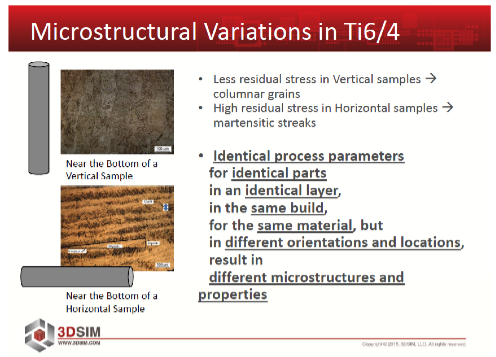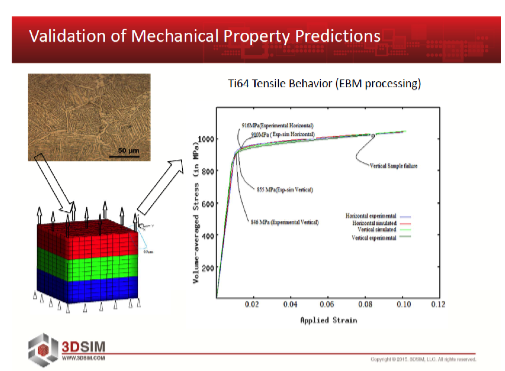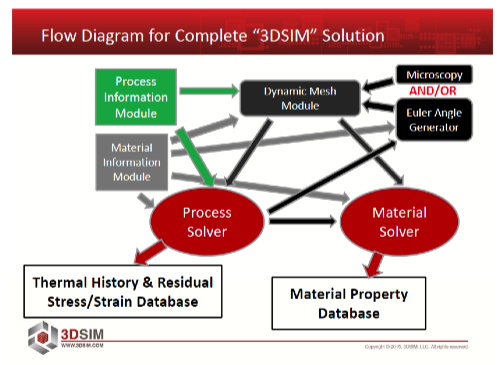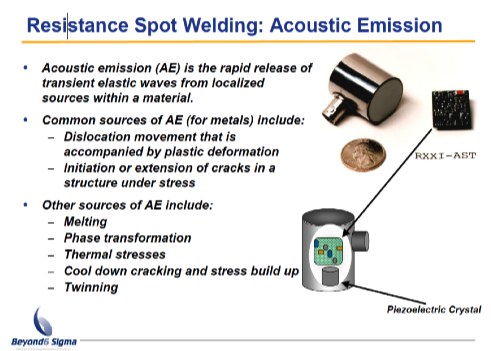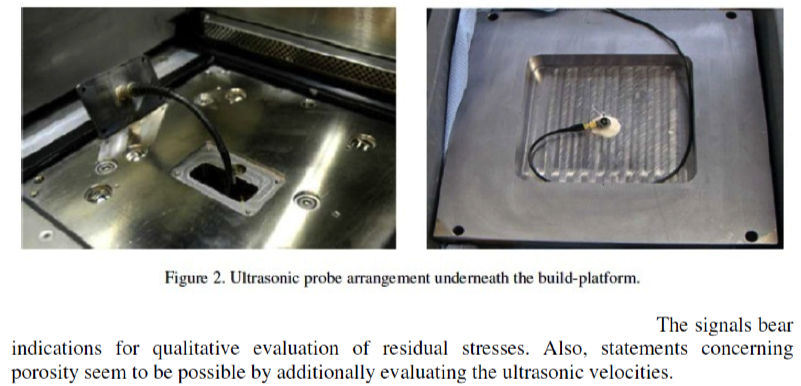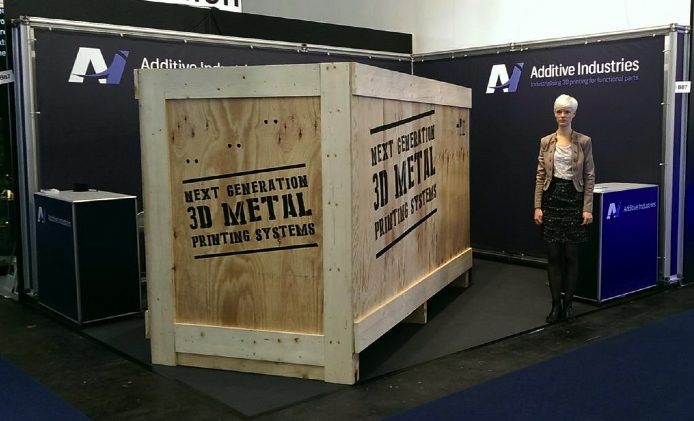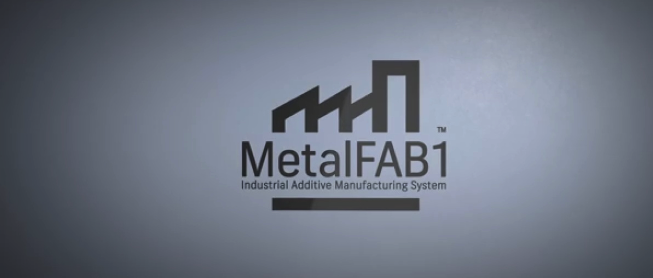I believe the new 3D printing system from Additive Industries, MetalFAB1, will include 3DSIM and PrintRite3D. Additive Industries has acted in a certain manner and described the 3D printing system in such a way that makes me believe the new machine will include both technologies for quality assurance. Additive Industries’ announcements for technological cooperation with Sigma Labs (SGLB) 12/10/14 and the partnership with Brent Stucker to support 3DSIM 01/14/15 did not go unnoticed. In fact, these announcements were very intriguing as both technologies use predictive analysis for the enhancement of repeatability, quality, and productivity. Meanwhile, Additive Industries has remained tight-lipped about exact specifications for their 3D printing system, only revealing that the capabilities will include reproducibility by a smart calibration strategy, optimized product consistency, and quality by improved process flow. I will present evidence to support my suspicion that Additive Industries’ next-generation 3D printing system will include 3DSIM and PrintRite3D technologies.
Additive Industries has worked tirelessly since 2012 to create a solution that seeks to understand the intricacies of process control and applying that knowledge to advance 3D printing for industrial manufacturing. Additive Industries has devised and operated an open innovation environment to share in the ambition of transforming AM from a means in creating a part to a final solution in problem solving. They have gathered some of the most brilliant minds in the departments of design, engineering, and research institutions to create a 3D printing system that will produce parts that meet the rigors of mechanical testing. For additive manufacturing to become an industrial solution, the technology must be lean in operation and parts produced must conform to engineering design intent. I believe that Additive Industries and their partners have developed a new 3D printer with performances that will meet the requirements for parts to function in safety-critical applications. Additive Industries’ partners would agree and this is why they have labeled their 3D printing machine, not merely as a printer, but a system that is the first among the next generation of machines.
Dr. Brent Stucker, CEO of 3DSIM LLC, co-founder and first chair (2009-2014) of ASTM F42, is focused on eliminating the trial-and-error method of understanding process control. His simulation software, 3DSIM, solves the problem in setting correct build orientation and process parameters. There is a lack of understanding in how build orientation and process parameter affect microstructure and part performances. Stucker shows that identical geometries will have different microstructure when orientation is changed. This occurs even though process parameters, material, layer, and build remain the same.
The microstructure of the part is what determines the mechanical properties. The reason orientation and process parameters cannot be easily determined is due to the fact that existing simulation software options do not have the strength to calculate the complexities in 3D printing geometry and moving energy sources. 3DSIM solves this problem by using complex equations to predict correct process parameters and its performance can be seen in the consistency in results. Tests were conducted with titanium alloy (Ti64) from three different sources and the 3D printed parts showed similarities in microstructure and density.
Mechanical testing was also conducted and results showed passing performance in tensile strength.
3DSIM also records the microstructure history, thermal profile, and mechanical test results to form material property databases.
3DSIM is also being evaluated at the following manufacturing facilities, academia, and institutions:
Underwriters Laboratories (UL) recently announced that they will invest in 3DSIM to further advance simulation for AM processing.
Sigma Labs was founded by scientists who were team members of the Materials Science and Technology: Metallurgy Group (MST-6) at Los Alamos National Laboratory (LANL). They are intellects in the foundations of welding engineering, process automation, and nondestructive evaluation. They have applied their expertise in welding metallurgy, process control, and both finite element and failure analyzing techniques. In the area of sensing technology, they have developed a means to deduce information from the natural resonant frequency of the weld pool in and throughout varying thermal regions. Sigma Labs has engineered automation by intelligent techniques to accurately predict, monitor, and control various aspects of metal bonds. The talents in the principal founders of Sigma Labs, Mark Cola and Vivek Dave, can be further examined in the MST-6 Fall 2000 newsletter to LANL.
Sigma Labs has developed predictive tools that utilize unique sensing technology and intelligent statistical analysis for real-time control of the 3D process. Acoustic energy can be interpreted to give information about the material microstructure, phase changes, thermodynamic tolerances, stress, and cracks. This information gives insight to the investigation of the dynamic changes in the melt pool as the metal powder is heated, melts, and cooled to solid material. What is most important, however, is the ability for acoustic energy to achieve top-side penetration. Acoustic energy can cross through physical barriers and a source that can be relied upon to transmit vital information.
Cameras and optical systems are insufficient to gather information as visual and thermography can be easily obstructed by any density encountered. The inferiority for optical and thermal imaging is noted by the National Institute of Standards and Technology (NIST) researchers who found that thermal emissivity may give unreliable temperature readings as the melt pool element contains homogenous liquid, unconsolidated powder, and solidified surfaces.
Sigma Labs uses acoustic energy to reveal information about melting, phase condition, thermal stresses, and mechanical failure. What is more, Sigma Labs uses probabilistic analysis for the prediction of weld quality and the performance of their technology can be found in their research article to LANL, “Strategy for Small-Lot Manufacturing: In-Process Monitoring and Control.” The acoustic signals were shown to be reliable predictors of bond quality and the results were confirmed by destructive testing in cross-sectional examination of joints. One may say that one of Sigma Labs’ chief engineers’ greatest accomplishments was the presentation of their methods to accurately predict bonds and automate control to the renowned research laboratory that developed the single most powerful technology in the modern world – the atomic bomb.
Sigma Labs has matured technologies in the area of in-process monitoring and process characterization of 3D printing. Sigma Labs’ ability to use acoustic energy has matured into sensing technologies, SENSORPAK, and process characterization and semi-automation control, INSPECT, which are far advanced in the 3D printing industry. MTU Aero Engines, Germany’s premier aircraft manufacturer, recently garnered interest for the use of acoustic energy. MTU has given an effort to study acoustic energy in a research cooperative, MERLIN. They presented their findings in the article, “Online Monitoring of Additive Manufacturing Processes Using Ultrasound” which deduced that acoustic energy can be a reliable source of information. Their findings were confirmed with the correlation of acoustic energy to destructive test results in tensile strengths and fatigue tests. They concluded that acoustic energy is reliable in gaining qualitative information for microstructure and mechanical properties but their methods needs more development. The most interesting aspect of the MERLIN research, however, was the placement of the ultrasound probe. The probe was placed underneath the build plate and in-process information was still able to to be obtained through the thickness of the metal plate. The MERLIN project inadvertently displayed the ability of acoustic signals to achieve top-side penetration.
In the meantime, Sigma Labs appears to be quietly working to build quality products. They have enlisted BetaTron Electronics, top-tier distributor of electrical components and provider of contract manufacturing services. The BetaTron Electronics team are expert builders for process automation systems. In addition to being International Traffic in Arms Regulations (ITAR) compliant, they are also ISO 9001:2008 and UL508 certified in the manufacturing of instruments and control and panel assemblies. BetaTron Electronics is the principal provider of Siemens automation control. The strategic partnership between Sigma Labs and BetaTron Electronics is quite interesting as no cancerous margin is spared in the either party for technological precision.
So what does Additive Industries have exactly that they would want to keep such information from being leaked? I have followed a trail of evidence for me to believe that what Additive Industries has is a game-changing technology to be the end-all to some. Additive Industries conducts itself with the highest level of professionalism and their partners are of the same high caliber. In understanding the technology and observing the progress Additive Industries has made, I have come to conclude that the likelihood of MetalFAB1 having technologies from Brent Stucker and Sigma Labs is a very high possibility.
There is no technology that will surpass the advantage in the predictive sciences of 3DSIM and PrintRite3D. MetalFAB1 will a solution for lean strategy, enhancement in rate of production, and intelligent calibration. 3DSIM and PrintRite3D will work in synergy in process initiation, characterization, and control. 3DSIM will reduce waste from trial-and-error efforts to reveal 3D printing machine instruction (parameter sets) prior to powering the machine. The prior method created waste in having parts 3D printed, destructive tests performed, and parameter sets changed. These steps were repeated in multiple iterations until a quality part is printed, which only then are the parameter sets finalized. 3DSIM will eliminate this waste of time, material, and effort by providing build orientation and parameter sets. Once the process is underway, PrintRite3D will be utilized for in-process monitoring, process characterization, and defect prevention. The ability to monitor the process, understand what is taking place (characterization), and recognizing the conditions that causes a print to fail will provide a feedback to 3DSIM for the fine-tuning of parameter sets. The quality assurance unit as a whole will be a multi-staged system to ensure that parts being manufactured will be that which adheres to engineering design intent and qualified to function in safety-critical applications.
To see how PrintRite3D will perform in-process monitoring, process characterization, and prevent defects, please see my article, “Sigma Labs’ In-Process Technology to Overcome Barriers in Metal 3D Printing.”
A time has come for original equipment manufacturers (OEMs) to offer an explanation of how quality in manufacturing will be ensured. There is a lot of misdirection by the way systems’ producers will ride the shirt tails of an announcement to deceive the public in suggesting that they have a quality assurance/quality control (QA/QC) system in place, when in fact, only a system is provided for a project and not much more. We see this in the way 3D Systems (DDD) will announce such headlines as “U.S. Air Force Contract Taps 3D Systems to Transform Manufacturing of Aerospace Components” when there is not a single detail for QA/QC. When the veil is lifted and 3D Systems is confronted about the recent inability to sell systems and details of systems’ inferior quality emerge, 3D Systems chooses to blame the quality of metal powder used. 3DSIM presented by direct examination of microstructure the ability to produce consistent results from differing sources of metal powder. 3D Systems needs to provide a better explanation to avoid making additional convoluted statements and for the sake of saving themselves from further embarrassment in their own confusion.
So does Additive Industries have something that is a reason for a lot of excitement? They certainly do! Additive Industries has acted with surgical precision in teaming with some the most brilliant minds to create a 3D printing system that will have multi-staged technologies to ensure the compliance of engineering design intent. We will soon know as they reveal the true nature of MetalFAB1 in Q4 2015, either at EuroMold or formnext. In the meantime, I will be thinking curiously about what Additive Industries is hiding inside the box and enjoying the video they provided for a glimpse of their prized secret.
References:
Additive Industries: https://additiveindustries.com/Home
Additive World Conference 2015: https://additiveworld.com/Conference-series/Additive-world-conference-2015
Sigma Labs and Additive Industries collaboration announcement:
https://www.prnewswire.com/news-releases/sigma-labs-signs-technology-cooperation-agreement-with-additive-industries-300007213.html
3DSIM and Additive Industries collaboration announcement:
https://additiveindustries.com/News/Additive-industries-first-3d-metal-printing-equipment-partner-of-3dsim
3DSIM: https://3dsim.com/
https://additiveworld.com/upload/file/Additive%20World%20keynote%20_%20Brent%20Stucker.pdf
UL invests in 3DSIM announcement and photo credits:
https://www.tctmagazine.com/3D-printing-news/ul-invests-in-3dsim-advance-simulation-additive-manufacturing/
Sigma Labs Inc: https://sigmalabsinc.com/
MST-6 Fall 2000 newsletter to LANL: https://www.lanl.gov/mst/docs/Welding2000.pdf
NIST: https://dx.doi.org/10.6028/NIST.IR.8036
MTU Aero Engines Merlin Project: https://www.merlin-project.eu/partners/mtu.jsp
https://www.ndt.net/events/ECNDT2014/app/content/Paper/259_Spies.pdf
Betatron Electronics: https://www.betatronelectronics.com/
Seeking Alpha 3D Systems Stephens Spring 2015 Conference:
https://seekingalpha.com/article/3235256-3d-systems-ddd-management-at-stephens-2015-spring-investment-conference-transcript
MetalFAB1 photo credits: https://twitter.com/TeamAdditive/status/537150565755924480/photo/1
Subscribe to Our Email Newsletter
Stay up-to-date on all the latest news from the 3D printing industry and receive information and offers from third party vendors.
You May Also Like
3D Printing Unpeeled: New Arkema Material for HP, Saddle and Macro MEMS
A new Arkema material for MJF is said to reduce costs per part by up to 25% and have an 85% reusability ratio. HP 3D HR PA 12 S has been...
3D Printing News Briefs, January 20, 2024: FDM, LPBF, Underwater 3D Printer, Racing, & More
We’re starting off with a process certification in today’s 3D Printing News Briefs, and then moving on to research about solute trapping, laser powder bed fusion, and then moving on...
3D Printing Webinar and Event Roundup: December 3, 2023
We’ve got plenty of events and webinars coming up for you this week! Quickparts is having a Manufacturing Roadshow, America Makes is holding a Member Town Hall, Stratafest makes two...
Formnext 2023 Day Three: Slam Dunk
I’m high—high on trade show. I’ve met numerous new faces and reconnected with old friends, creating an absolutely wonderful atmosphere. The excitement is palpable over several emerging developments. The high...



